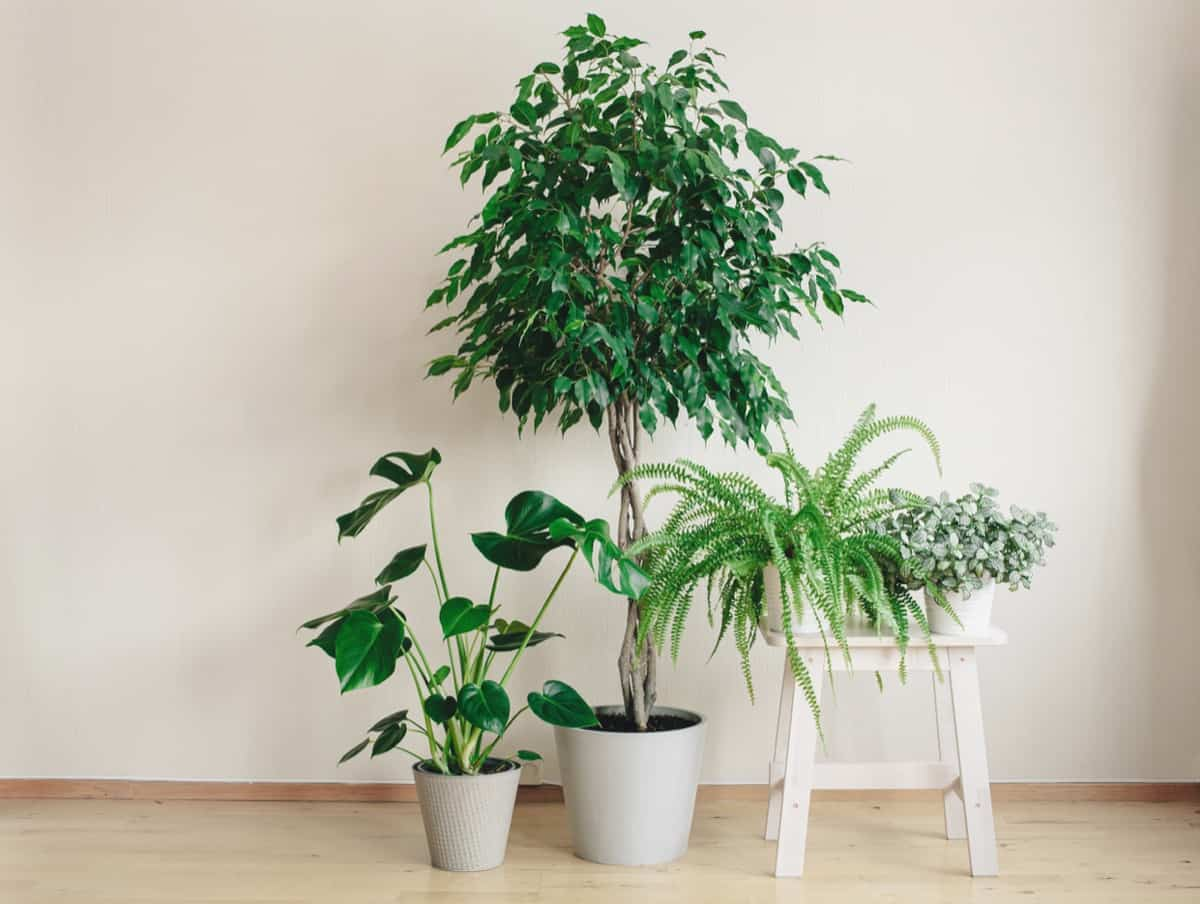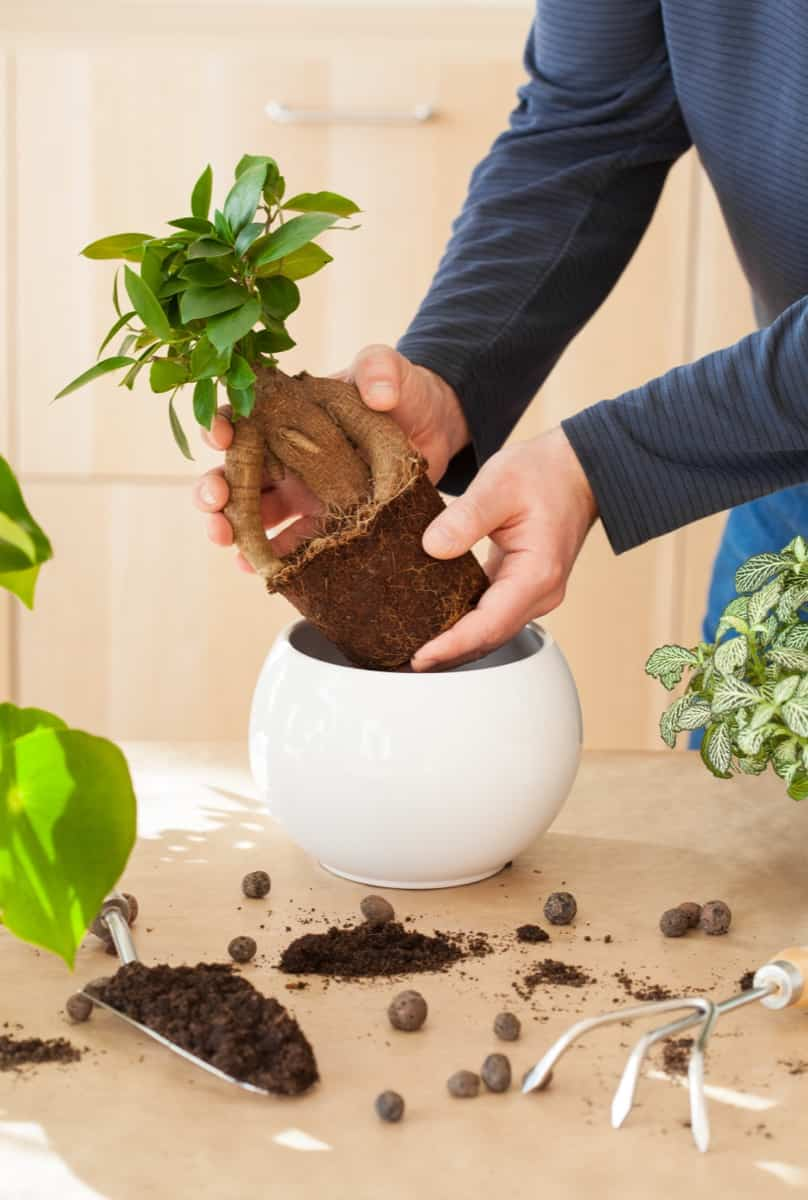As nature’s miniature reflections of grandeur, Bonsai trees personify strength, resilience, and tranquil beauty. One of the most versatile and popular species among Bonsai enthusiasts is the Ficus genus. Ficus Bonsai’s many shapes and sizes offer a unique blend of aesthetic appeal and adaptability, making them ideal for beginners and seasoned Bonsai cultivators.
These stunning miniature trees’ successful growth and development greatly depend on light, soil, and fertilizer. These factors are vital for the health and appearance of the Ficus Bonsai. Dive into the world of Ficus Bonsai and explore the captivating types and varieties waiting to transform your living space into a serene sanctuary.
Types and Varieties of Ficus Bonsai
Ficus Microcarpa Ginseng Bonsai
Renowned for its unique appearance, the Ficus Microcarpa Ginseng Bonsai, known as the ‘Pot-bellied Ficus,’ offers an exceptional blend of thick, bulbous roots and lush, waxy leaves. These unique features have garnered considerable appreciation and recognition in the Bonsai community.

The Ginseng Bonsai thrives in well-draining Ficus Bonsai soil, enabling its roots to receive adequate moisture without becoming waterlogged. Light requirements are also crucial to its successful growth, as it prefers bright, indirect light, although it can also tolerate lower light conditions. Ficus bonsai fertilizer should be applied during the growing season to sustain its robust growth, giving the Ginseng Bonsai the nutrients it requires.
Ficus Retusa Bonsai
The Ficus Retusa Bonsai, with its thick trunk and evergreen leaves, exudes an aura of age-old wisdom and tranquility. Known for its resilience, this Bonsai is forgiving regarding care and maintenance. It thrives in various light conditions, from partial shade to full sun, catering to the Ficus Bonsai light requirements. Like its cousin, the Ginseng Bonsai, the Ficus Retusa requires well-draining soil and periodic feeding with Ficus bonsai fertilizer for healthy, vigorous growth.
Ficus Salicaria Bonsai
The Ficus Salicaria, or ‘Willow Leaf Fig,’ stands out due to its slender, willow-like leaves and twisting trunk. This Bonsai is a favorite among enthusiasts for its ability to adapt to various conditions. It flourishes in light, well-draining soil, and regular fertilization, representing the classic Ficus bonsai light requirements, soil preferences, and nutritional needs.
Ficus Benjamina Bonsai
Ficus Benjamina, or ‘Weeping Fig,’ is well-loved for its cascading branches and glossy, green leaves that create an umbrella-like canopy. Like its Ficus counterparts, this Bonsai requires a balance of light, soil, and nutrients to grow successfully. A healthy Ficus Benjamina Bonsai starts with the right soil. The Ficus Bonsai soil should be able to retain water while providing good drainage to prevent root rot. The tree thrives in bright, indirect light and benefits from regular feeding with a balanced Ficus bonsai fertilizer.
In case you missed it: How to Grow and Care for Japanese Red Maple Bonsai: Planting, Pruning, and Repotting

Ficus Religiosa Bonsai
The Ficus Religiosa, or ‘Sacred Fig,’ is significant in many cultures and religions worldwide. This majestic Bonsai boasts heart-shaped leaves and a sturdy trunk, representing peace and spirituality. As with other Ficus varieties, the Ficus Religiosa flourishes in well-draining soil, optimal light conditions, and regular feeding of Ficus bonsai fertilizer.
Ficus Lyrata Bonsai
The Ficus Lyrata, also called the ‘Fiddle Leaf Fig,’ is a favored indoor Bonsai with wide, fiddle-shaped leaves and a compact size. Its love for bright, filtered light fulfills the Ficus Bonsai light requirements, while its preference for slightly moist, well-draining soil ensures optimal growth and development. As for feeding, a slow-release Ficus bonsai fertilizer applied in the growing season keeps this Bonsai healthy and vibrant.
Ficus Natalensis Bonsai
Native to Africa, the Ficus Natalensis, or ‘African Fig,’ showcases dense foliage and a robust root system. The Ficus Natalensis Bonsai requires a healthy balance of light, soil, and nutrients to thrive. It prefers bright, indirect light, well-draining soil, and regular applications of Ficus bonsai fertilizer for optimal growth and health.
Ficus Panda Bonsai
The Ficus Panda, with its thick, glossy leaves and flexible trunk, is a sight to behold. This Bonsai variant is an excellent choice for indoor gardening, as it can tolerate various light conditions, fulfilling the Ficus Bonsai light requirements. Ficus Panda thrives in well-draining soil and benefits from regular feeding with a balanced Ficus bonsai fertilizer.
Ficus Salicifolia Bonsai
The Ficus Salicifolia, also known as the ‘Willow Leaf Fig,’ is cherished for its grace and elegance. This Bonsai tree displays a profusion of slender leaves on its arching branches, presenting a picture of serene beauty. It thrives in a combination of bright, indirect light, well-draining soil, and regular applications of Ficus bonsai fertilizer.
Ficus Carica Bonsai
Lastly, the Ficus Carica, or ‘Common Fig,’ is a traditional favorite in Bonsai. Its unique lobed leaves and twisting trunk make it an eye-catching addition to any Bonsai collection. Meeting the Ficus Bonsai light requirements, soil preferences, and nutritional needs, the Ficus Carica Bonsai is a model of the adaptability and resilience the Ficus genus is renowned for.
Caring for Your Ficus Bonsai
The journey with Ficus Bonsai doesn’t end with selecting the right variety; the real art lies in nurturing and maintaining these living masterpieces. The foundation of their care revolves around three fundamental aspects: light, soil, and fertilizer. Striking a balance between these factors is pivotal to the thriving of your Ficus Bonsai. Irrespective of the variety, all Ficus Bonsai require bright, indirect light, which helps them photosynthesize effectively.
In case you missed it: How to Grow and Care for Banyan Bonsai: Planting, Pruning, and Repotting

Moving onto the soil, Ficus Bonsai soil should offer good drainage, enabling the roots to remain moist without becoming waterlogged. Loamy soil, a blend of sand, silt, and clay, often works best for Ficus Bonsai. As for feeding, apply a balanced Ficus Bonsai fertilizer during the growing season, generally from spring to autumn, to provide the nutrients necessary for the tree’s growth.
Regular pruning will help maintain the shape and size of your Ficus Bonsai, but always remember that less is more when removing foliage. Lastly, patience is paramount in the world of Bonsai. Cultivating these miniature trees is an exercise in mindfulness, patience, and respect for nature’s rhythms. Enjoy each step of the journey as your Ficus Bonsai transforms from a tiny sapling into a symbol of nature’s resilient beauty.
Conclusion
In the captivating realm of Bonsai cultivation, the Ficus genus holds a position of unparalleled prominence, reflecting the harmony of nature in miniature forms.
- Feed Your Flock for Less: Top 10 Tips to Save on Chicken Feed
- Ultimate Guide to Ossabaw Island Hog: Breeding, Raising, Diet, and Care
- Hatching Answers: The Top 10 Reasons Your Chickens Aren’t Laying Eggs
- Eggs and Economics: Breaking Down the Cost of Raising Backyard Chickens
- Defend Your Greens: Proven Methods to Keep Iguanas Out of Your Garden
- Ultimate Guide to Cinnamon Queen Chicken: A Comprehensive Guide for Beginners
- Ultimate Guide to California Tan Chicken: Breeding, Raising, Diet, Egg-Production and Care
- Ultimate Guide to Marsh Daisy Chicken: Breeding, Raising, Diet, and Care
- 10 Types of Chicken Farming Businesses You Can Start for Profits